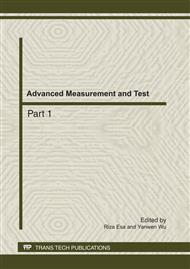[1]
F. K. Jun, Makoto Kanou. Thermal conductivity enhancement of energy storage media using carbon fibres[J]. Energy Conversion &Management, Vol. 41, p.1543~1556, (2000).
DOI: 10.1016/s0196-8904(99)00166-1
Google Scholar
[2]
J.K. Carson. Analysis of the influence of sample structure on the effective thermal conductivity of theoretical porous sample using finite element simulations[J]. International Journal of Refrigeration, Vol. 26, p.873~880, (2003).
DOI: 10.1016/s0140-7007(03)00094-x
Google Scholar
[3]
I.V. Belova, G.E. Murch. Monte Carlo simulation of the effective thermal conductivity in two-phase sample[J]. Jouranl of Sample Processing Technology, Vol. 154, p.741~745, (2004).
DOI: 10.1016/j.jmatprotec.2004.04.191
Google Scholar
[4]
F. T. Lan, K. Z. Li, H. J. Li et al. Joining of carbon/carbon composites for nuclear applications. Journal of sample science, Vol. 44, pp.3747-3750, (2009).
Google Scholar
[5]
F. Gao, M. Yao. The effect of interlaminated matrix rivetting to interlaminated shear strength of 2-D woven-reinforced composite sample[J]. Journal of Northwest Institute of Textile Technology, Vol. 2, pp.269-274, (2001).
Google Scholar
[6]
G. Q. Jiao, R. C. Ning, Z. X. Lu. Study on Interleaved Composites [J]. Aerospace Sample & Technology, Vol. 4, pp.36-39, (2001).
Google Scholar
[7]
Y Shindo, R. Wang, K Horiguchi. Double cantilever beam measurement and finite element analysis of cryogenic modeI interlaminar fracture toughness of glass cloth/epoxy laminates[J]. ASMEJ Eng Mater Technol, Vol. 123, pp.191-197, (2001).
DOI: 10.1115/1.1345527
Google Scholar
[8]
A. Felix, P. Adrian, Sk. Kunigal. Modified short beam shear test for measurement of interlaminar shear strength of composites[J]. Journal of Composite Sample, Vol. 5, pp.453-464, (2003).
DOI: 10.1177/0021998303037005053
Google Scholar
[9]
Masashi Koyama, Hiroshi Hatta, Hiroshi Fukuda. Effect of temperature and layer thickness on these strengths of carbon bonding for carbon/carbon composites[J]. Carbon, Vol. 43, pp.171-177, (2005).
DOI: 10.1016/j.carbon.2004.09.002
Google Scholar
[10]
X. Xiong, B. Y. Huang, P. Xiao. Interlaminar shear strength and fracture mechanism of quasi-3D C/C composites [J]. Chinese Journal of Nonferrous Metals, Vol. 11, pp.1799-1803, (2004).
Google Scholar
[11]
X. H. Zhang, H. J. Li, Z. B. Hao. Influence of Needle-punching Processing Parameters on Mechanical Properties of C/C Composites Reinforced by Carbon Cloth and Carbon Fibre Net [J]. Inorganic Sample Journal, Vol. 5, pp.963-967, (2007).
Google Scholar


